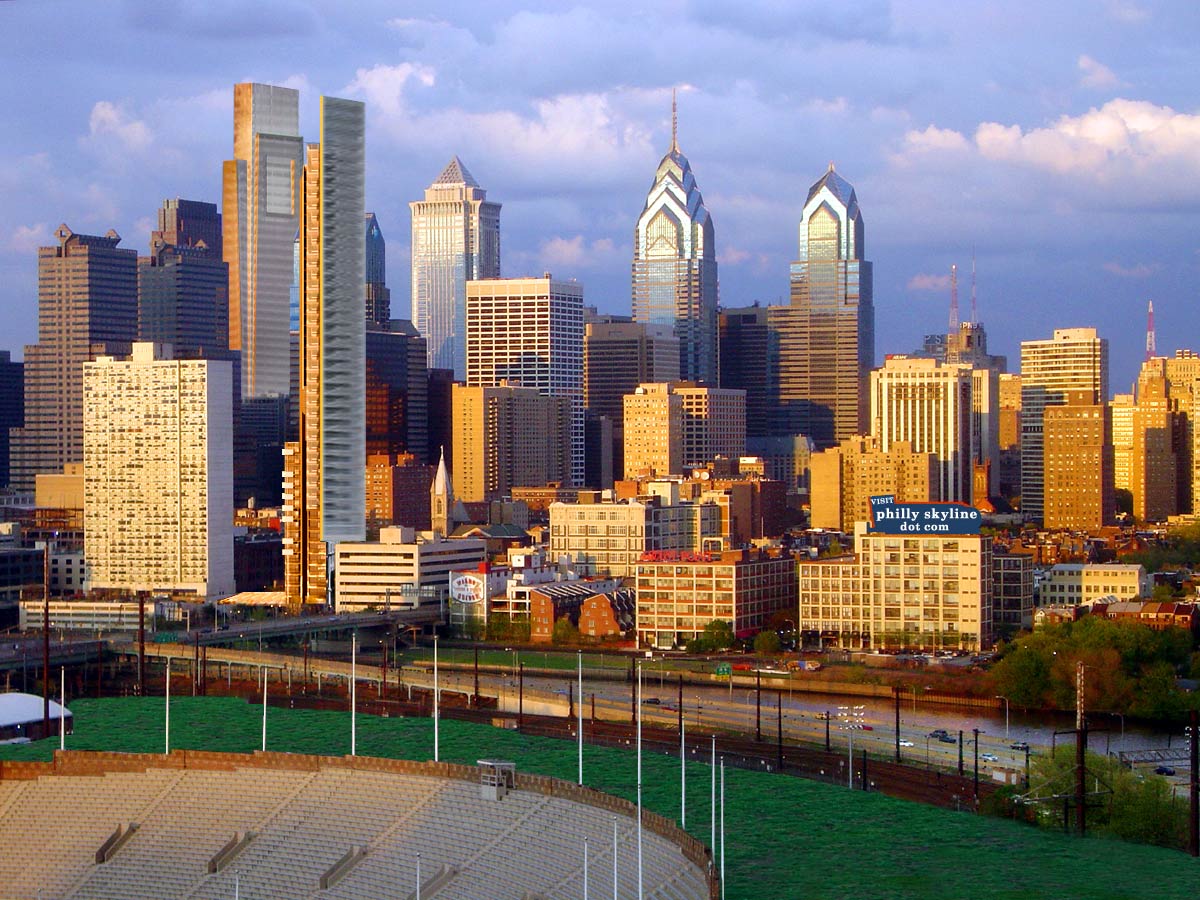 The risks posed by global climate change is still uncertain. What is known is that the polar ice caps have melted quickly over the last decade, the hole in the ozone layer has grown, and weather patterns have changed substantially. There are some experts who believe that climate change and global warming are myths, but they are in the minority.
The risks posed by global climate change is still uncertain. What is known is that the polar ice caps have melted quickly over the last decade, the hole in the ozone layer has grown, and weather patterns have changed substantially. There are some experts who believe that climate change and global warming are myths, but they are in the minority.
While there is a consensus in the scientific community that climate change is a serious problem, the same cannot be said for the general public. According to a recent Gallup poll, nearly 50% of Americans “now believe that the seriousness of global warming is generally exaggerated, up from 41% in 2009 and 31% in 1997,” when Gallup first asked the question. For officials in some cities, however, the problem is very real.
For one thing, pollution causes asthma and other diseases that can be expensive to treat. Beyond that, clean cities are more attractive to both businesses and people. No city wants to lose taxpayers because it is considered “dirty.” Environmental quality is also an important part of business development. Cities can draw businesses with tax breaks, but even the most generous of incentives may not be enough to overcome concerns about a city’s cleanliness or lack of preparedness regarding climate change.
Regardless of whether the debate is resolved in the scientific community or in the public’s mind, the leaders of many of the largest cities on earth have decided that it is better to operate under the assumption that the worst could occur.
On June 1st, 40 of the world’s largest cities devoted to preventing climate change – the C40 – met in New York to attend the signing of an unprecedented agreement sponsored by the World Bank. The measure is intended to improve and streamline funding to cities and local government projects to address climate change by creating standardized methods of dealing with climate change, and more accurately measuring effectiveness of greenhouse gas reduction. According to the New York Times, the World Bank’s climate investment fund was $6.4 billion last year, and these measures will potentially enable cities to receive new grants and investments for their programs from these funds, as well possibly billions from other sources.
The C40 cities – which include six from the United States – are at the forefront of the environmental movement. In the United States, the cities of New York, Chicago, Philadelphia, Houston, and Los Angeles, are implementing technology and local projects with two goals in mind: First, they aim to reduce the potential effects of climate change on their city by reducing carbon emissions and other greenhouse gases. This includes setting carbon emissions targets, using alternative energy sources, such as solar and wind, and improving the energy efficiency of existing infrastructure.
The second goal addresses future problems caused by climate change such as rising temperatures and planning for reduced access to water. In Chicago, where temperatures are expected to rise to the point where the climate would be like Alabama, it is planning on installing air conditioners in most public schools. Officials in Philadelphia are trying to reduce the amount of paved space in the city, which will help reduce the effect of warm temperatures compounded by concrete.
The reasons these cities have chosen to jump on the green bandwagon are both political and practical. Many are trying to earn their city the title of “the greenest,” which planners believe will attract new citizens, new investments and new jobs, and improve the fiscal health of local businesses by reducing their energy bills. An additional incentive is that no one stands to lose more infrastructure and people than these major American cities.
24/7 Wall St. has reviewed the efforts of each of the five largest American cities by population – Philadelphia, Houston, Chicago, Los Angeles, and New York City. Each are transforming themselves into models of green technology by using alternative energy sources, building energy efficient buildings and developing eco-friendly transportation. The cities’ Energy Star ratings, which measures the energy efficiency of buildings and appliances, were also considered. In addition, we reviewed the American Lung Association’s Annual State of The Air Report and the Organization for Economic Co-operation and Development (OECD) risk assessments for climate change and air pollution.
This is What America’s Big Cities are Doing to Fight Climate Change
5. Philadelphia
 > Ozone Emissions rank: 20th worst emissions
> Ozone Emissions rank: 20th worst emissions
> Reported Carbon Emissions: 16 million metric tons
> Proposed Reductions in Emissions: 20% by undetermined date
> Emissions Reduced in 2010 by EnergyStar Fitted Buildings: 14,700 homes
As recent as 2009, Philadelphia had very few energy-efficient buildings, despite being the fifth largest city in the U.S. Last year, the city received a $25 million grant from the Department of Energy’s Retrofit Ramp-Up program. Between 2009 and 2010, the city increased the number of energy-efficient buildings from 36 to 126. Reducing building electricity use is part of Mayor Michael Nutter’s ambitious plan to make Philadelphia the greenest city in the U.S by 2015. Among the city’s other efforts is a plan to change all of Philadelphia’s traffic lights to LED lights, which use much less electricity than the traditional incandescent bulbs. The city plans to reduce greenhouse gas emissions by 20% within the next 10 to 20 years. As a port city, Philadelphia is exposed to the one of the worst effects of global climate change – rising sea levels. According to the OECD’s 2008 report, the city has more than $200 billion in property at risk when sea levels are expected to rise to destructive levels. At a local Environmental Protection Agency seminar in March, experts announced that the city has already been affected by climate change. Pointed to as evidence, the city’s fresh water supply has dwindled after warmer regional temperatures have caused decreased annual snow melt, an important source of fresh water.
4. Houston
 > Ozone Emissions rank: 8th worst emissions
> Ozone Emissions rank: 8th worst emissions
> Reported Carbon Emissions: not reported
> Proposed Reductions in Emissions: not reported
> Emissions Reduced in 2010 by EnergyStar Fitted Buildings: 47,300 homes
According to a 2008 report, Harris County, where Houston is located, released an average of 18.63 million tonnes of carbon dioxide each year, more than any other county in the country. Already battling a sinking coastline from overuse of groundwater, the Texas city faces an even greater risk than most for possible rising sea levels; more than $100 billion in property is exposed to the risk of coastal flooding. One report, issued in 2009 by the Environmental Defense Fund, estimates three of every four freight facilities in the Houston area is at risk. While it is often criticized for its lack of action relative to other cities, especially considering it has as great an impact on global warming as any city in North America, Houston has taken some important steps, including having the most green space among the ten largest cities in the U.S., which is important for carbon sequestration – the filtering of CO2 out of the atmosphere. The city also offered free energy efficiency retrofits – which reduce building energy consumption – for several poor communities.
3. Chicago
 > Ozone Emissions rank: not Among the 25 worst
> Ozone Emissions rank: not Among the 25 worst
> Reported Carbon Emissions: 37.2 million metric tons
> Proposed Reductions in Emissions: 25% by 2020
> Emissions Reduced in 2010 by EnergyStar Fitted Buildings: 54,500 homes
According to The New York Times, climate scientists report major changes in temperature could have a huge effect on the region, causing temperatures of over 90 degrees for 70 days a year compared with the 10 to 20 that occur now. This change would result in 1,200 heat-related deaths per year, and cost the city billions of dollars just for pothole repairs. Chicago has been one of the most aggressive of the nation’s major cities in attempting to avert climate change – as well as preparing for some of its inevitable consequences. The city has been one of the most active in the retrofit movement, with more than 13,300 homes or apartments, and nearly 400 commercial buildings, modified for energy efficiency as of this year. The city’s sweeping Chicago Climate Action Plan (CCAP) has been at the forefront of a variety of measures, including “green roofs,” where a building’s roof is covered with plants to improve insulation and energy use, carbon sequestration, and rainwater capture.
2. Los Angeles
 > Ozone Emissions rank: the worst ozone emissions
> Ozone Emissions rank: the worst ozone emissions
> Reported Carbon Emissions: not reported
> Proposed Reductions in Emissions: 35% by 2030
> Emissions Reduced in 2010 by EnergyStar Fitted Buildings: 39,800 homes
Los Angeles has the fourth worst particle pollution – and the worst ozone pollution – in the country. Although recent data is not available on greenhouse gas emissions for the city, Los Angeles county did release the second most in the U.S. on average, according to a report released in 2008 by a group called Project Vulcan, which studies carbon emissions. While the California metropolis is located near the ocean, it does not have the same kind property and people at risk in the event of global-warming induced coastal flooding. It does face a wide range of other problems, including dramatically warmer temperatures, fires, severe water shortages, and a haze that will make the city’s current smog problem seem modest by comparison. The city has one of the most serious emission problems. Officials and residents have taken steps to reduce the impact on the atmosphere. As of last year, Los Angeles had more than 500 Energy Star certified buildings, well more than any other city, and nearly double its closest competitor, Chicago. The city, which has one of the worst tailpipe emissions problems in the U.S., was one of the first to implement Bus Rapid Transit, which reduces car emissions by shuttling suburban residents into the downtown business area. The city also sponsors a “Green Power for Green L.A.” program, which allows residents to pay a premium in order to have a portion of their home’s electricity come from renewable sources.
1. New York
 > Ozone Emissions rank: 17th worst ozone emissions
> Ozone Emissions rank: 17th worst ozone emissions
> Reported Carbon Emissions: 52.7 million metric tons
> Proposed Reductions in Emissions: 30% by 2030
> Emissions Reduced in 2010 by EnergyStar Fitted Buildings: 36,500 homes
There are few cities in the world more at risk of catastrophe if the worst predictions of climate scientists turn out to be correct. According to the OECD report, Manhattan and the other four boroughs will have $2.14 trillion in property at risk of damage or destruction, as well as 2.9 million at risk of displacement, if sea waters rise by projected levels (2 feet by 2080, according to one analysis). Perhaps this is one reason the city has been one of the leaders in the C40 movement, and its Mayor, Michael Bloomberg, is chair of the committee. Unlike the many of the other cities in the C40, most of the carbon emissions in New York comes from energy use in buildings, rather than transportation. Bloomberg’s policies have focused on improving the energy efficiency of buildings, including an effort to paint the roofs of buildings white, which can save as much as 20% on electricity use. Another project aims to replace all the fuel oil burning boilers in the city with natural gas.
Michael B. Sauter
The Easy Way To Retire Early
You can retire early from the lottery, luck, or loving family member who leaves you a fortune.
But for the rest of us, there are dividends. While everyone chases big name dividend kings, they’re missing the real royalty: dividend legends.
It’s a rare class of overlooked income machines that you could buy and hold – forever.
Click here now to see two that could help you retire early, without any luck required.
Thank you for reading! Have some feedback for us?
Contact the 24/7 Wall St. editorial team.



